Introduction
Navigating the complexities of bankruptcy can be a daunting task for any organization, particularly when it comes to understanding liabilities subject to compromise. These debts, which encompass both secured and unsecured obligations, play a critical role in restructuring efforts aimed at restoring financial health. With strategic negotiation at the forefront, CFOs must assess which liabilities can be effectively managed, as doing so could result in significant reductions and pave the way for a more sustainable future.
Recent case studies, such as the restructuring of PREPA's $10 billion debt, highlight the transformative potential of effective negotiations. This article delves into the nuances of compromised liabilities, offering actionable insights and strategies that empower financial leaders to navigate the intricacies of Chapter 11 reorganization successfully.
Defining Liabilities Subject to Compromise in Bankruptcy
Liabilities subject to compromise refer to financial obligations that can be negotiated during bankruptcy proceedings. These frequently encompass both secured and unsecured financial obligations, contingent responsibilities, and commitments that may be resolved for less than their total worth. In Chapter 11 bankruptcy, these liabilities are critically evaluated to determine which can be restructured or discharged to help the company regain financial stability.
For instance, secured debts—backed by collateral such as property or assets—may be renegotiated to extend payment terms or reduce interest rates. In contrast, unsecured obligations, which lack collateral, such as credit card balances or unsecured loans, can often be settled for a fraction of their original amount. A pertinent example is the PREPA Debt Restructuring case, which illustrates how such negotiations can lead to significant reductions in liabilities. On December 16, 2022, the Oversight Board submitted a Plan of Adjustment to reorganize over $10 billion of obligations concerning the Puerto Rico Electric Power Authority (PREPA). This plan aims to reduce PREPA’s liabilities by around 80%, ensuring the financial stability necessary for investing in a modern and reliable energy system for Puerto Rico.
Furthermore, recent developments have led to the establishment of a Debt Management Policy, which prevents future unsustainable financial obligations by allowing new borrowings solely for capital improvements and mandating repayment within 2-5 years of issuance. As noted by the Oversight Board, 'this approach reduces debt by 80% and saves Puerto Rico more than $50 billion in debt service payments.' This approach highlights the significance of prioritizing debts and negotiating effectively during bankruptcy proceedings to attain a sustainable economic future.
Grasping the scope and nuances of obligations subject to compromise is essential for CFOs guiding their companies through the complexities of bankruptcy reorganization. It is a pivotal concept that determines how businesses prioritize debts and negotiate with creditors to restore financial health.
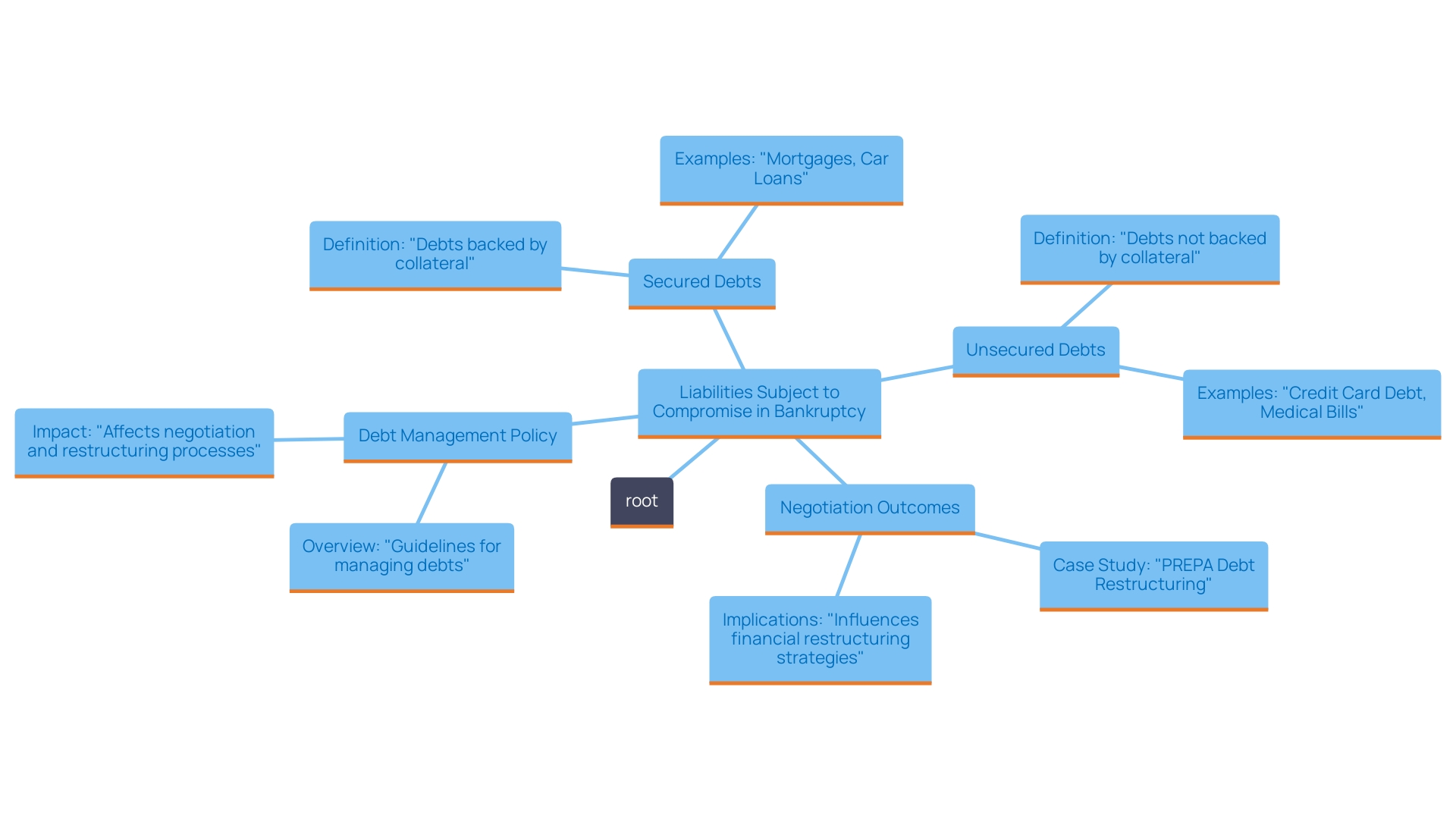
Practical Implications of Liabilities in Chapter 11 Reorganization
In the complex landscape of Chapter 11 reorganization, obligations subject to compromise play a pivotal role in shaping the restructuring plan. Financial experts emphasize the importance of strategic negotiation with creditors to achieve favorable outcomes. For example, the Mannheim Corporation successfully negotiated a significant reduction in its obligations, showcasing the potential benefits of effective creditor engagement. On average, businesses undergoing Chapter 11 bankruptcy experience a debt reduction of approximately 30%, underscoring the critical nature of these negotiations.
To navigate these negotiations effectively, CFOs must assess which liabilities qualify for compromise, considering cash flow projections and creditor priorities. This involves a detailed analysis to determine which debts can be restructured in a way that supports the organization's long-term viability. As Katharina Michaelowa, a seasoned economic expert, points out, "Understanding the intricacies of creditor negotiations is crucial for any successful restructuring."
Moreover, leveraging resources such as the whitepaper "Mastering the Cash Conversion Cycle: 20 Strategies for Optimal Business Performance" can provide CFOs with actionable insights to enhance cash flow and profitability during this critical period. This guide offers proven strategies to optimize inventory management, streamline accounts receivable, and negotiate better payment terms with suppliers—all vital for maintaining liquidity.
Recent case studies illustrate that focusing on these key areas not only addresses immediate monetary pressures but also positions the company for sustainable growth, ensuring that cash flow remains critical for post-bankruptcy recovery. Additionally, utilizing services like the Comprehensive Business Valuation Service can assist in determining the true worth of the business, providing valuable insights for potential investors and stakeholders. This strategic approach empowers CFOs to master the cash conversion cycle and significantly enhance their organization's economic health.
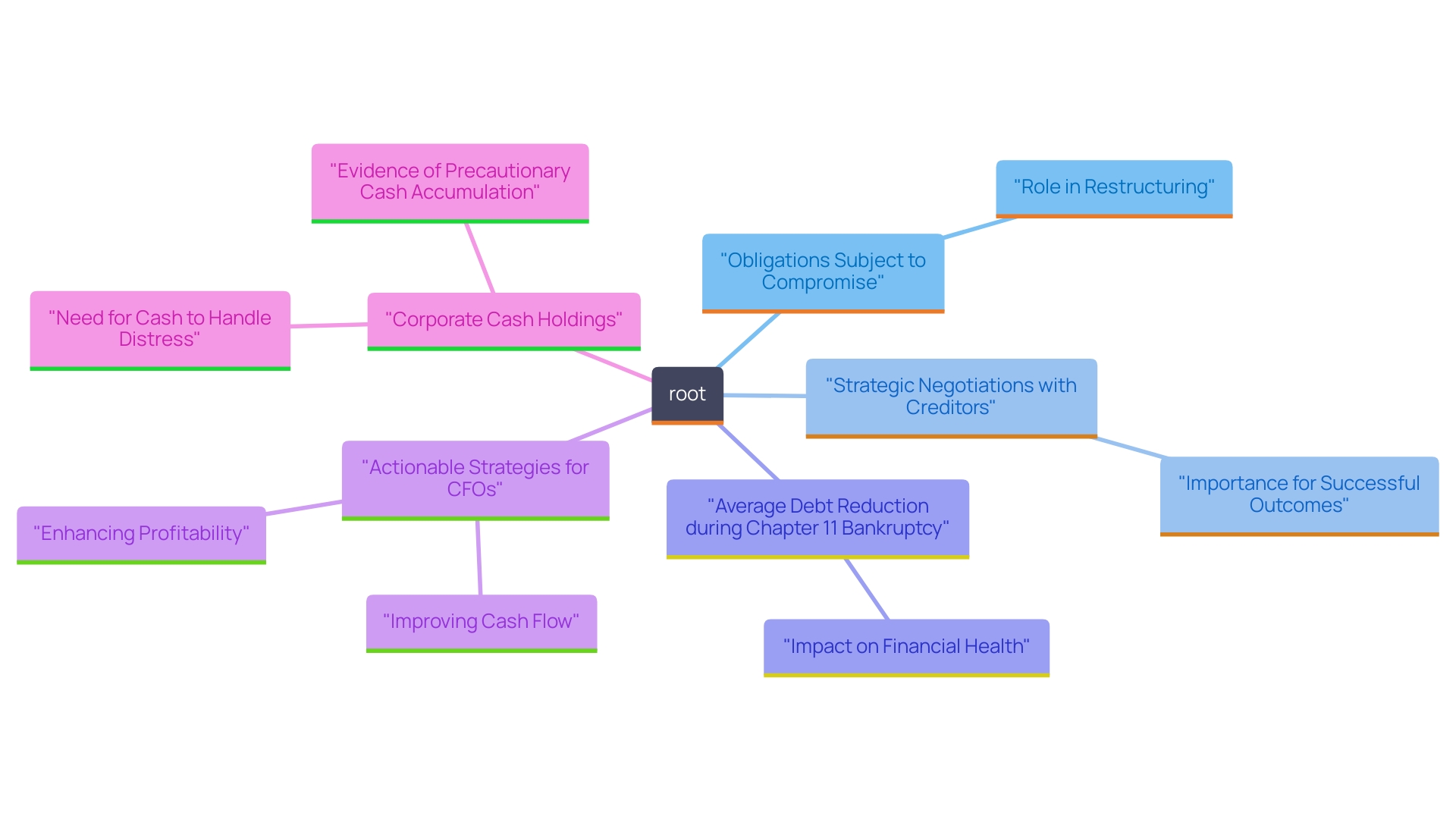
Identifying Key Liabilities in Financial Assessments
To effectively identify key liabilities subject to compromise, financial professionals must start with a thorough financial assessment of the organization. This involves a meticulous review of balance sheets, income statements, and cash flow statements to accurately pinpoint outstanding debts. As Madelyn Goodnight aptly summarizes, 'The aim is to understand the company's business model, the profitability (or loss) of its operations, and how it's spending, investing, and generally using its money—summarizing the company by the numbers, so to speak.' This viewpoint emphasizes the significance of a thorough fiscal assessment in recognizing obligations and corresponds with the necessity for strategic business enhancement.
In categorizing these obligations, distinguishing between secured, unsecured, and contingent debts is crucial. Recent monetary evaluations, like those by Coca-Cola, which observed their other obligations increase from $8,510 million in 2019 to $9,453 million in 2020, emphasize the consequences such growth has on monetary assessments and the urgency for accurate identification and categorization. This is where streamlined decision-making and real-time analytics come into play, ensuring that professionals can respond effectively to changing circumstances.
Financial modeling techniques and forecasting potential outcomes play a vital role in this process. By employing these methods, professionals can prioritize which obligations to address first, ensuring a more efficient restructuring. Our client dashboard, which provides real-time business analytics, helps continually monitor the success of these plans, allowing businesses to operationalize the lessons learned through the turnaround process. The case study on identifying and assessing the risks of material misstatement not only illustrates how auditors determine significant risks and the potential impact on monetary reports but also emphasizes the importance of precise obligation categorization in guiding audit approaches.
Precisely classifying obligations in bankruptcy not only clarifies the economic landscape but also aligns the restructuring process with the company's long-term objectives, ensuring a strategic and effective resolution. By implementing the insights gained from the turnaround process, businesses can improve their economic strategies and foster stronger, more resilient operations.
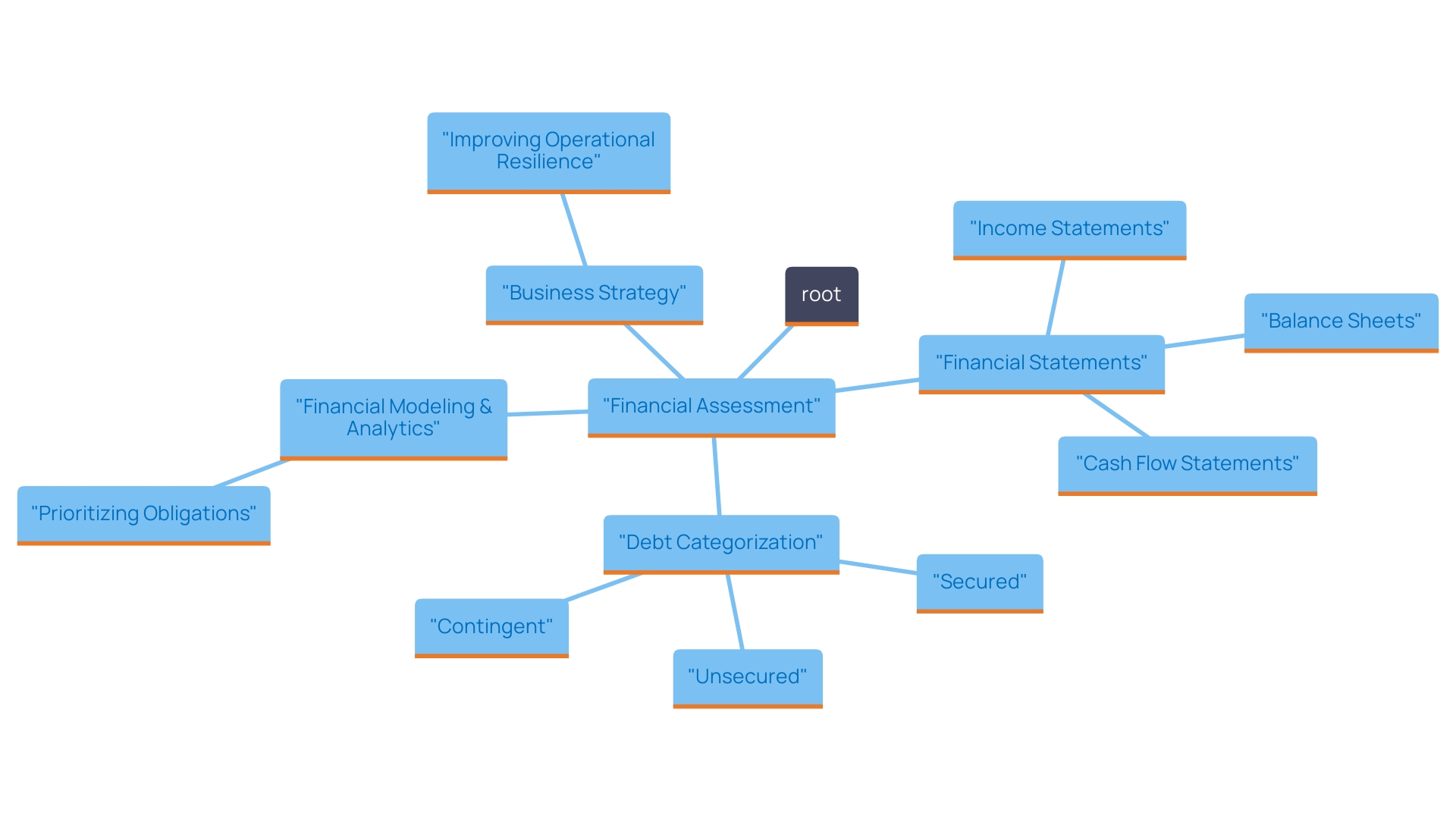
Strategies for Negotiating Liabilities with Creditors
Effective negotiation of liabilities with creditors necessitates a comprehensive and strategic approach, particularly in tightening credit markets. Financial professionals must meticulously gather and analyze data on the company's current financial status and forecast future cash flows. This preparation allows CFOs to clearly demonstrate to creditors the potential benefits of compromising on obligations. Utilizing real-time analytics through client dashboards to monitor business health can provide critical insights during negotiations.
Statistics on pre-petition unsecured obligations—where these financial responsibilities often remain unsettled until a reorganization plan is approved—can serve as a persuasive tool. By highlighting this fact, CFOs can propose pragmatic alternatives such as:
- Extended payment terms
- Partial loan forgiveness
- Offering equity stakes in the company
For instance, during the restructuring process, replacing ineffective management and realigning equity can reward new capital contributors, as demonstrated in several successful case studies.
Michael McGrath emphasizes, 'While the expense, the stigma, and the trauma of a bankruptcy case may limit its application, the remedies of the Bankruptcy Code are sufficiently powerful such that all business professionals should have its considerations as a part of their repertoire.' This underscores the importance of being well-versed in bankruptcy options.
Building robust relationships with creditors is crucial. Transparent communication that underscores mutual long-term benefits can facilitate more favorable negotiations. By fostering a collaborative environment and operationalizing lessons learned from previous negotiations, professionals can often achieve agreements that aid in business recovery while minimizing losses for creditors. Strategies such as:
- Offering early repayment incentives
- Negotiating for debt swaps
can significantly enhance the success rates of these endeavors. Leveraging expert strategies and staying informed about current trends in creditor negotiations can further improve outcomes in these challenging situations.
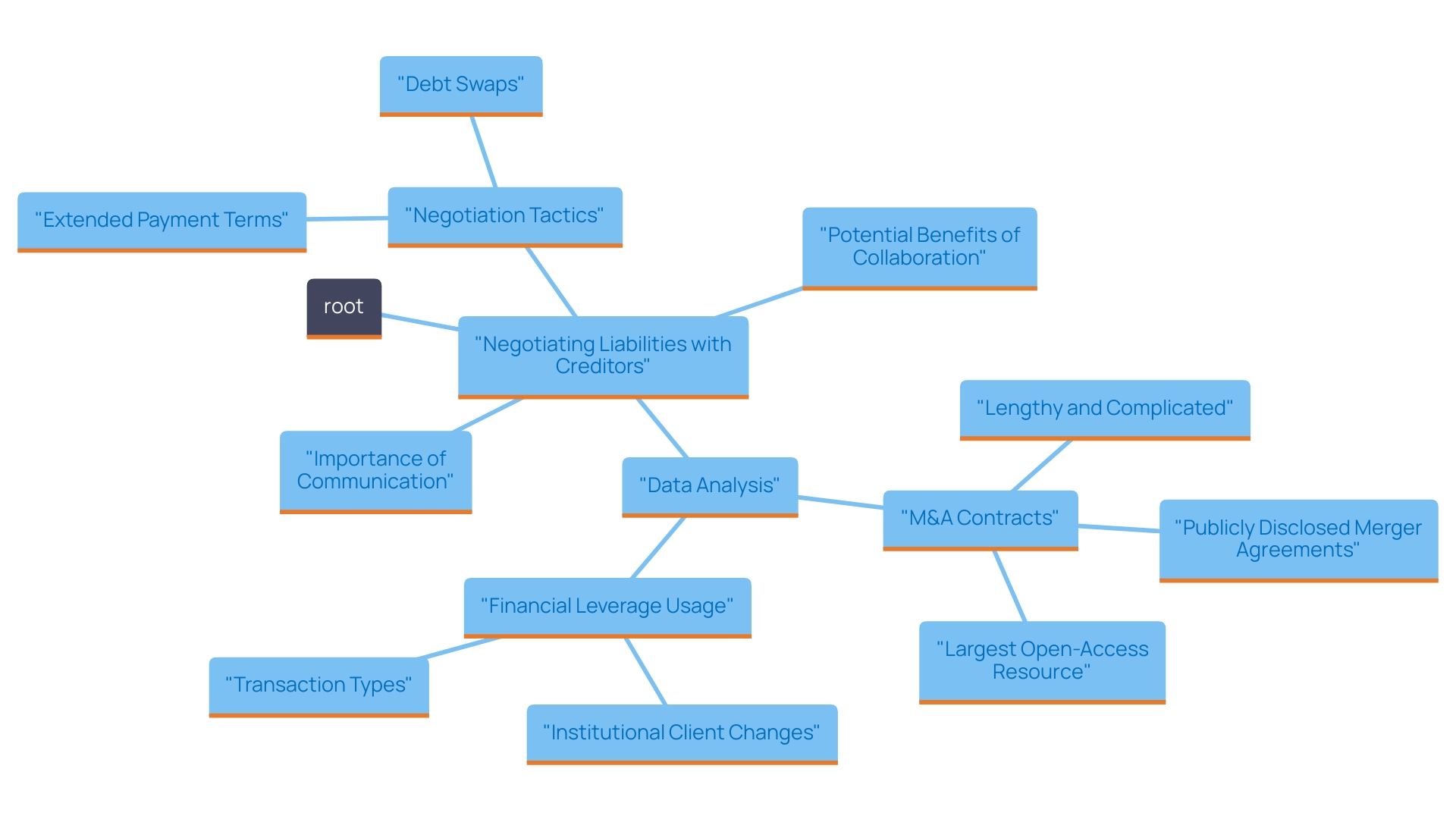
Evaluating the Impact of Compromised Liabilities on Financial Statements
Compromised obligations can profoundly influence an organization's fiscal statements, affecting both the balance sheet and income statement. For instance, during Greece's recovery, the nation benefited from an average interest rate of around 1.8 percent, with a maturity profile exceeding 20 years. This advantageous restructuring demonstrates how negotiated agreements can materially affect economic outcomes, particularly in the context of obligations subject to compromise, which can substantially impact a company's fiscal health.
To navigate these complexities, professionals in finance must adopt streamlined decision-making processes supported by real-time analytics. By continuously monitoring the success of restructuring efforts through client dashboards, organizations can promptly identify shifts in equity and net income. This ensures informed decisions that preserve business value. As Sheldon Whitehouse, Chair of the Senate Budget Committee, aptly remarked, 'Before the dust settles, the private equity firm sells and leaves town, leaving communities to pick up the pieces.' This underscores the importance of accurate and transparent reporting in these scenarios, particularly in maintaining stakeholder trust when significant changes occur.
Moreover, recent changes in accounting standards now mandate precise documentation and reporting of negotiated settlements. This can require restating accounting statements to reflect the updated terms of obligations. Such adjustments are crucial for maintaining transparency and trust with investors and creditors, which is vital for post-bankruptcy recovery. For instance, Greece's journey to regained capital market access included substantial financial statement modifications that reflected its macroeconomic stability and adapted to new accounting standards concerning compromised obligations.
By adhering to these practices and leveraging comprehensive business valuation services, organizations can effectively manage compromised liabilities, uphold compliance with accounting standards, and foster investor confidence. This is essential for sustainable growth and recovery.
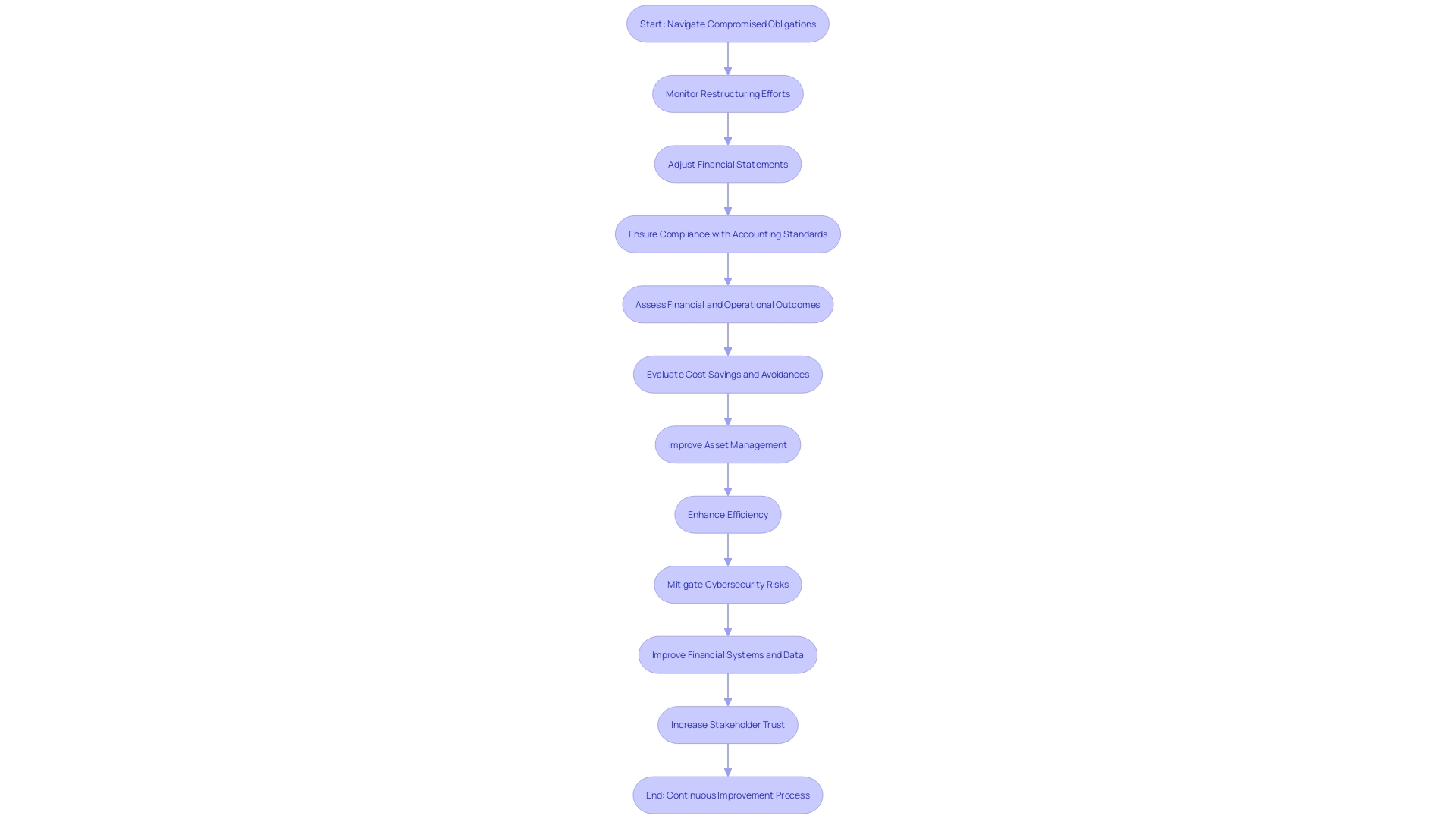
Conclusion
Navigating the complexities of liabilities subject to compromise is essential for organizations facing bankruptcy, particularly in Chapter 11 reorganization. Understanding the distinction between secured and unsecured debts, coupled with strategic negotiation, allows CFOs to significantly reduce liabilities, as evidenced by successful case studies like PREPA's restructuring. Comprehensive financial assessments and accurate categorization of these liabilities are crucial steps in prioritizing which debts to address, ensuring that the restructuring aligns with long-term financial goals.
Equipped with actionable insights and effective negotiation strategies, financial leaders can engage creditors in a manner that fosters collaboration and mutual benefit. By leveraging data analytics and maintaining transparent communication, organizations can negotiate favorable terms that not only alleviate immediate financial pressures but also lay the groundwork for sustainable growth. The impact of these negotiations extends beyond immediate debt relief; they reshape financial statements and enhance stakeholder trust, ultimately positioning the company for a robust recovery.
In conclusion, the successful management of liabilities subject to compromise is a pivotal factor in an organization's ability to emerge from bankruptcy stronger and more resilient. By focusing on strategic negotiation and thorough financial analysis, CFOs can navigate the intricacies of bankruptcy proceedings with confidence, ensuring that their organizations are not just surviving but thriving in the aftermath. The time to act is now, as the choices made during this critical period will define the organization's financial health for years to come.




